Newsletter: Art that finds vulnerability and surrender in the Black religious experience
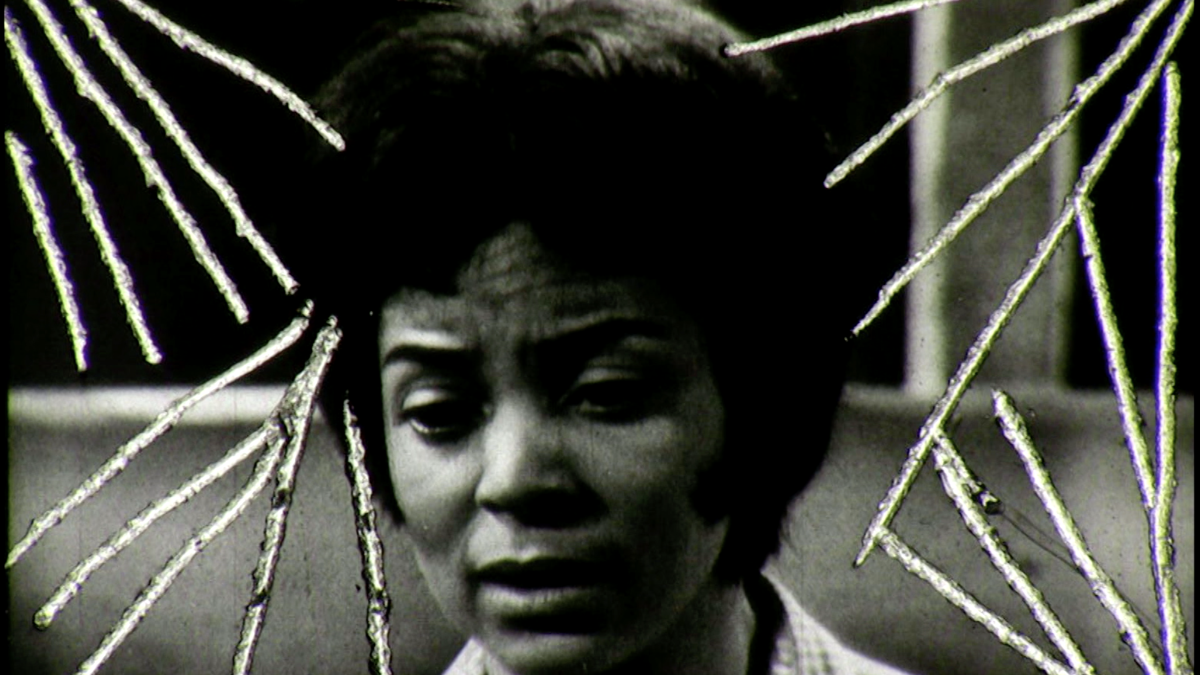
In a selfless act of service journalism, L.A. Taco has published my dream list: a guide to the best mango and sticky rice in the city, which I’m going to work on starting ... now. I’m Carolina A. Miranda, arts and urban design columnist at the Los Angeles Times, here with the weekly Essential Arts newsletter, which bears all the culture news — and spangly Italian pantsuits.
Dwelling in vulnerability
It begins with a snap of the neck, after which the head slips back and the eyes roll with it, leaving a person gazing at the sky — a connection with the celestial, with realms beyond our reach and our mental grasp. That movement is known as “the break” and it was a concept that curator Taylor Renee Aldridge was studying at a 2018 movement workshop in Trinidad and Tobago organized by the New Waves! Institute. It is a movement she describes in an essay published in April in the Los Angeles Review Books, that is about “letting the spirit in, relinquishing control.”
The idea of surrender — of opening mind and body to forces greater than ourselves — is at the heart of “Enunciated Life,” an exhibition that Aldridge has organized for the California African American Museum, where she was appointed visual arts curator last year. The show, which explores these vulnerable states within the context of Black spiritual practice, is both moving and enlightening.
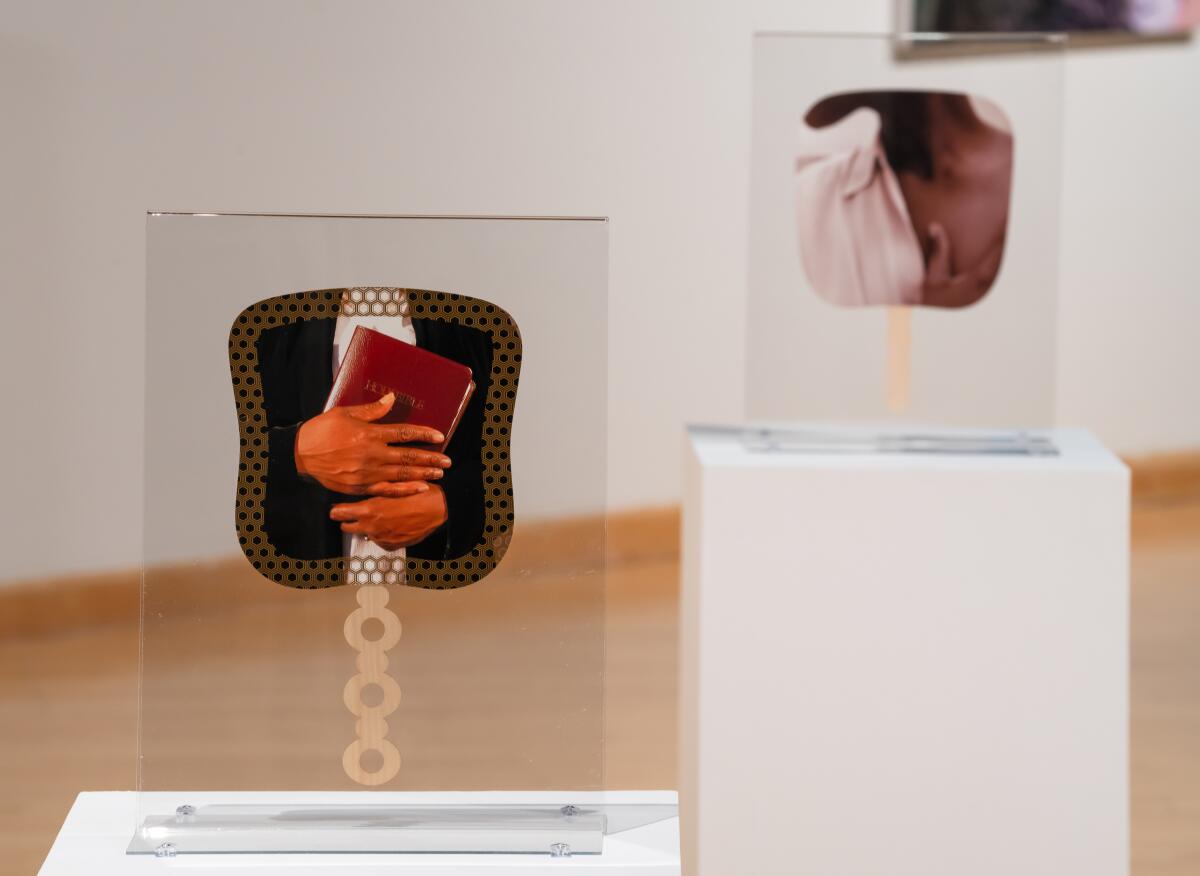
The show takes its core concept — and its name — from the writings of religious scholar Ashon T. Crawley, author of “Blackpentecostal Breath: The Aesthetics of Possibility.” In that 2016 work, he describes the power of breathing as a way “to enunciate life, life that is exorbitant, capacious, and fundamentally social, though it is also life that is structured through and engulfed by brutal violence.”
It’s “this irreducible openness in the body which allows you to think about your body being vulnerable and free,” Aldridge tells me. “In a Black body in this country that can be detrimental, but it can also offer these ecstatic moments.”
Make the most of L.A.
Get our guide to events and happenings in the SoCal arts scene. In your inbox once a week.
You may occasionally receive promotional content from the Los Angeles Times.
Those moments of ecstasy are embodied in roughly two dozen objects, videos and installations — including several original commissions — that explore ways in which Black spiritual practice offers the safe psychological and physical space for such release.
An architectonic installation by Pittsburgh-based artist Shikeith takes some of the aesthetic and psychological similarities between Black churches and nightclubs and renders them as a single structure titled “Sermon for a Longing in Blue.” The piece, one of the show’s original commissions, is crafted from dark mahogany and features interiors rendered in a plush, blue fabric. It conjures the spaces that can elicit a break, be it by offering religious sanctuary or the sanctuary of the dance floor.
The intersection between religious life and night life is one that Aldridge also addresses in her essay, noting the shelter these spaces offer to Black and queer bodies. The ecstatic experience, she writes, “I found it in relation with other women, in nightclubs where house music is played, in all the places where those marginalized from their orthodox upbringings retreat to find peace, pleasure, people.”
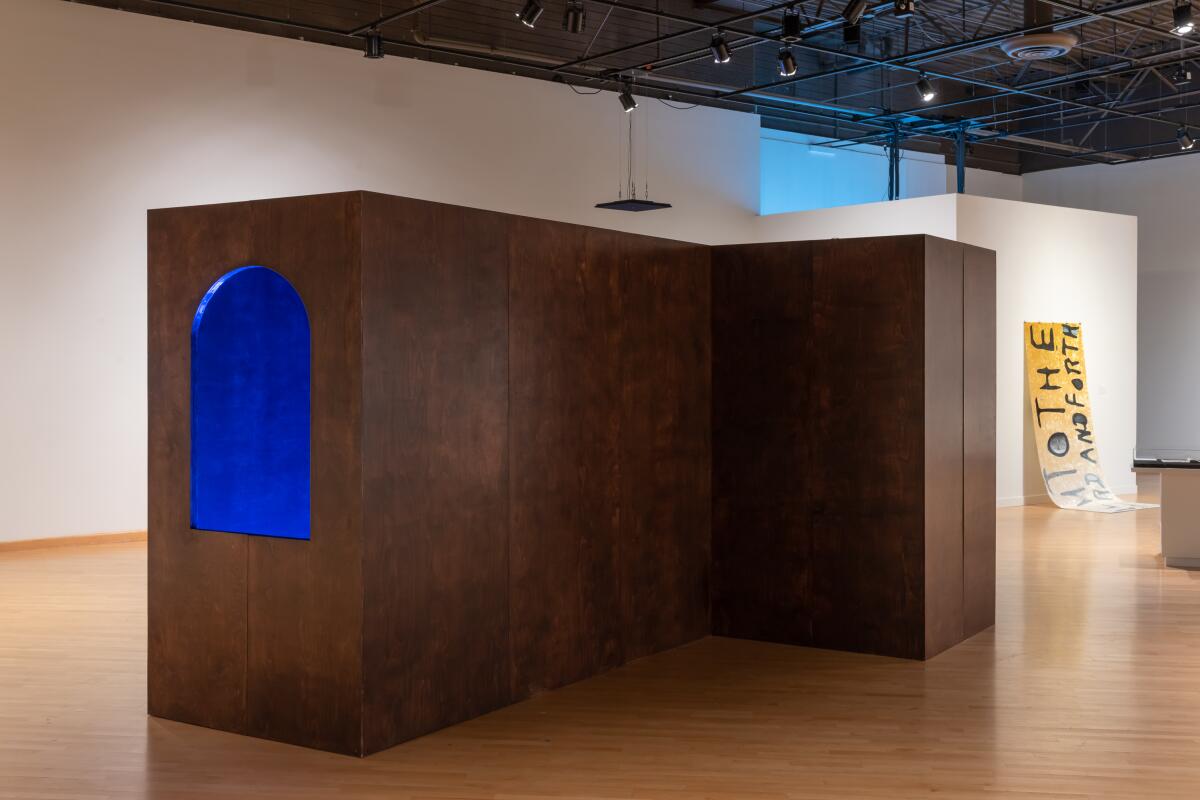
Elsewhere, an installation by Marianetta Porter features a series of paper fans inspired by the ones employed in Black churches, while the large-scale paintings of Steffani Jemison — canvases of fabric and clear plastic film studded with symbols — spill onto the floor with visual elements inspired by unknown languages, such as glossolalia (the act of speaking in tongues). It is language, explains Aldridge, that exists outside of colonial frameworks.
Particularly engrossing is an installation by Tiona Nekkia McClodden from 2020, titled “I, MELISMATA,” which features an audio compilation of melismatic singing, when multiple notes are sung to a single syllable. (Think of the undulating musical runs in gospel or R&B.) The artist isolates these moments, transforming them into a joyous meditation on the nature of breath.
Across the gallery, a 2015 video piece by Ja’Tovia Gary features the late actor Ruby Dee narrating an oral history by Fannie Moore, a woman who was born into slavery. Moore recounts the story of her mother, who, one day, while in the fields, erupts into an enthusiastic whoop. Despite the threats of a foreman, she continues to shout joyously, telling him: “I ain’t gonna grieve no more. No matter how you all done treat me and my children, the Lord has showed me the way. And some day, we ain’t never gonna be slaves no more!”
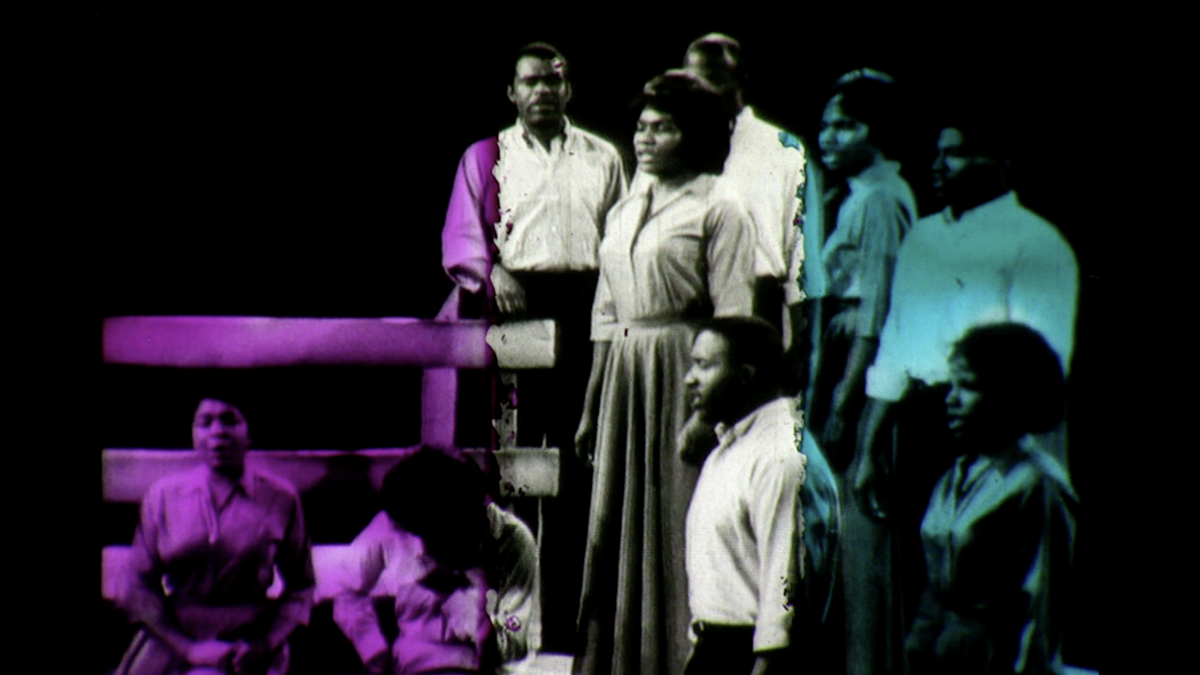
Gary has sketched on the film, surrounding Dee’s face with pulsing lines and cosmic halos, bathing swathes of the film in splashes of color. She has also spliced in footage from contemporary events. It is absolutely hypnotic. (A version of it can be seen on CAAM’s website, but it is infinitely more powerful to see it projected at a larger-than-life scale at the museum.) It’s a piece, says Aldridge, that “just brings in so many aspects of spiritual incarnation that we don’t normally think about as an act of resistance, an act of rage, an act of protest.”
“Enunciated Life” required some surrender by its artists and curators as well. The show was supposed to open in 2020, but it was repeatedly delayed by the COVID-19 pandemic. The show’s theme, says Aldridge, is about submitting “to spirit or circumstance; being forced to do that in the planning of this was something.
“So I just surrendered,” she adds, “and when I surrendered, we got a date.”
“Enunciated Life” is on view a the California African American Museum through Aug. 15; caamuseum.org.
Symbols of L.A.
My colleague Matt Pearce is known for spending July 4 tweeting photos of flaming palm trees with phrases like “DEATH TO PALM TREES. GOD BLESS AMERICA.” But in a new essay, he argues that perhaps it’s time to retire the palm tree as a symbol of Los Angeles. “Palm trees,” he writes, “when they are not being symbols, are kind of a problem to live with.” Besides functioning as July 4 kindling, the trees provide zero shade, fronds can strike passersby when they tumble, and worst yet, kill tree trimmers in some truly heinous work accidents.
I tackle another important L.A. symbol: the city’s new tourism logo. Designed by Shepard Fairey’s Studio Number One, in collaboration with House Industries, a design shop led by Andy Cruz, the logo is evocative of those Ocean Pacific tees from the ‘80s, and features the words “Los Angeles” in an ebullient, gradient script that is capped by a setting sun. It’s a beachy view of L.A., one that “is nostalgic for VW buses and surfer magazines.”
Did I buy this OP T-shirt featuring a throwback, geometric pattern that evokes a setting sun while reporting this story? Yes. Yes, I did.

All the ‘80s design talk got people talking on Twitter about the very PoMo Solo cup with the “Jazz” brush pattern in blue and purple. Which makes it a good time to resuscitate this great 2018 story by Thomas Gounley in Missouri’s Springfield News-Leader, about Gina Ekiss, the woman that designed it.
The pattern has such a cult following that the Springfield Cardinals put it on their jerseys three years ago.
Design time
Contributor Alexandra Lange looks at the ways in which U.S. Rep. Alexandria Ocasio-Cortez ties together fashion, graphic design and social media to craft a new brand of political messaging. Her campaign posters have done away with the typical palette of red, white and blue. The art for the Green New Deal is inspired by national parks posters created by the WPA-era Federal Art Project. And, in the past, she has even revealed what shade of lipstick she wears. “The old way of image-making is to dismiss lipstick questions as irrelevant,” writes Lange, “to present all messaging from behind a podium and to rely on other people’s cameras to capture the politician in casual moments.”
Enjoying this newsletter? Consider subscribing to the Los Angeles Times
Your support helps us deliver the news that matters most. Become a subscriber.
Architect Robert Rock, principal of Living Habitats, has designed a bridge to allow wildlife to cross over the 101 Freeway in Agoura Hills. Environmental activists are now working to raise the remaining $27 million needed to bring the project to fruition. “Mountain lions are prone to wander,” Rock told my colleague Louis Sahagún. “A wildlife crossing here is our best hope for keeping them from wandering into extinction.”
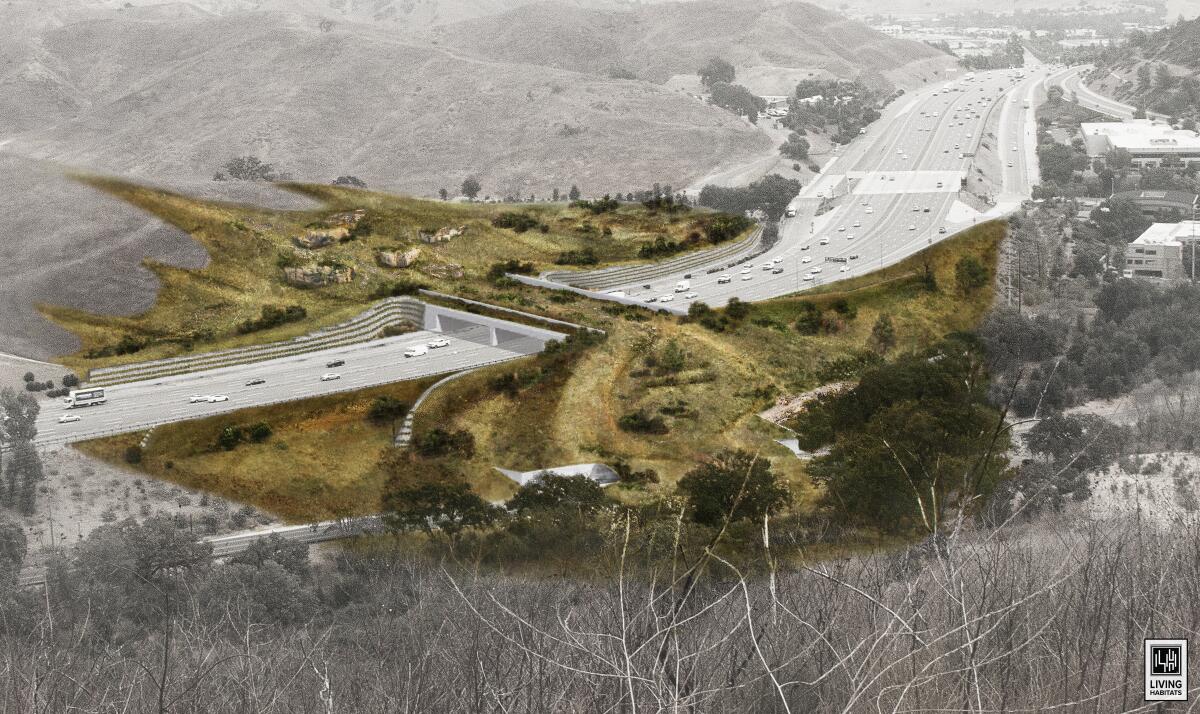
Since we’re on the subject of design, if you are receiving this newsletter in your inbox, you may have noticed that Essential Arts has a hot new lewk. For that, we can thank illustrator Alfredo Ponce. You can see his portfolio here or, better yet, follow him on Instagram.
If you are not currently receiving this newsletter in your inbox, well, you should be. Sign up here. It’s free!
Art report
Thomas Gainsborough‘s 18th century canvas “The Blue Boy,” which has not left the Huntington Library since 1922, is now set to travel to London for an exhibition at Britain’s National Gallery. But, as The Times’ Christopher Knight reports, that journey was opposed by a panel of nine art conservators that the Huntington convened in 2018 to determine the painting’s condition. “Sending the picture abroad was unanimously opposed by the expert team, who believed travel puts the prized work at grave risk,” he writes. “They warned of potential structural damage to the 250-year-old canvas from the arduous trip. Museum administration overruled their advice.”
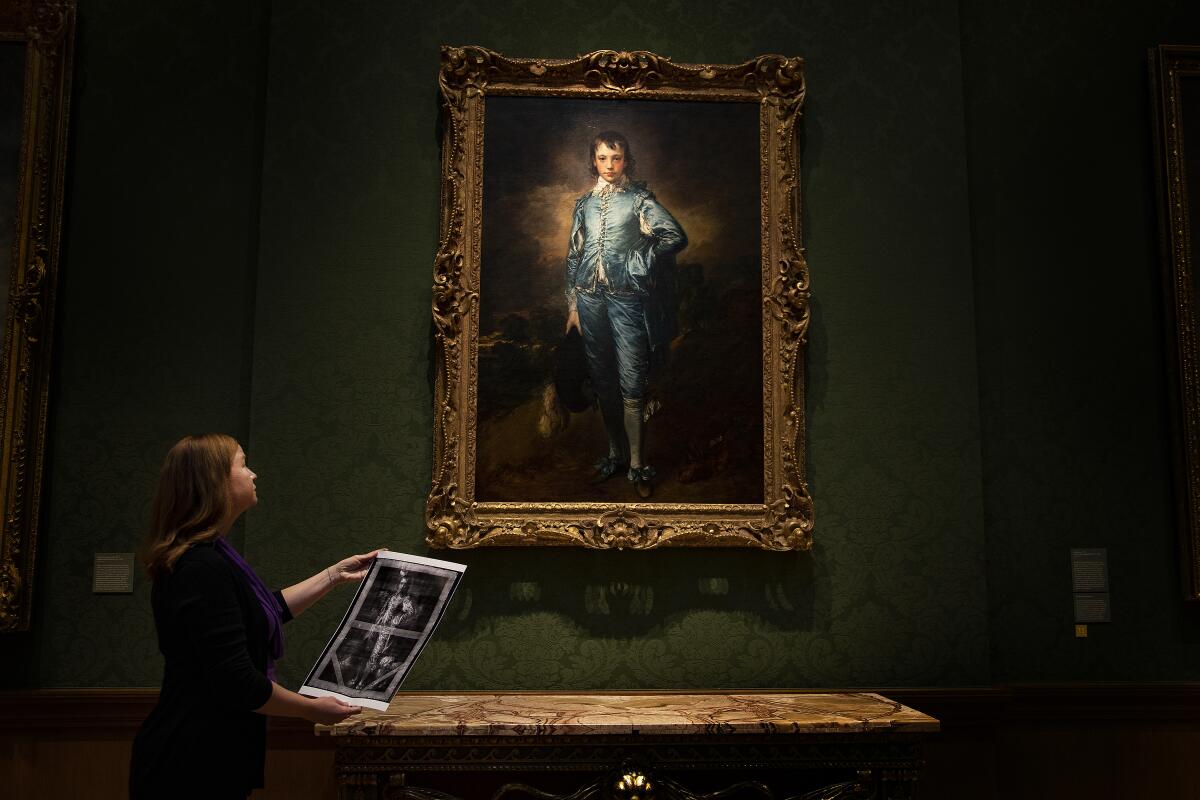
Visits to the Academy Museum of Motion Pictures, which opens in late September, will not come cheap. Deborah Vankin reports that adult admission has been set at $25. This puts it $5 above its neighbor, LACMA, and $9 above the Petersen Automotive Museum across the street.
What I’m reading
I was riveted by this gripping and horrifying account about the crackdowns against Uyghurs and Kazakhs in Xinjiang, China, reported by Raffi Khatchadourian in the New Yorker. In addition to arbitrary roundups and imprisonment, he describes a form of iconoclasm known as “miniaturization,” in which Uyghur mosques are razed and then rebuilt at a fraction of their former size.
I have been meditating on filmmaker Rodrigo Garcia‘s soon-to-be released memoir, “A Farewell to Gabo and Mercedes: A Son’s Memoir of Gabriel García Márquez and Mercedes Barcha.” In this slender, poignant volume, he chronicles the deaths of his father, the globally famous Colombian Nobel laureate, and his mother, the astute partner who ran his father’s affairs. As his father lay dying, Garcia says he found himself taking notes. “There is a compelling irresistible force,” he tells me, “to put it down on paper.”
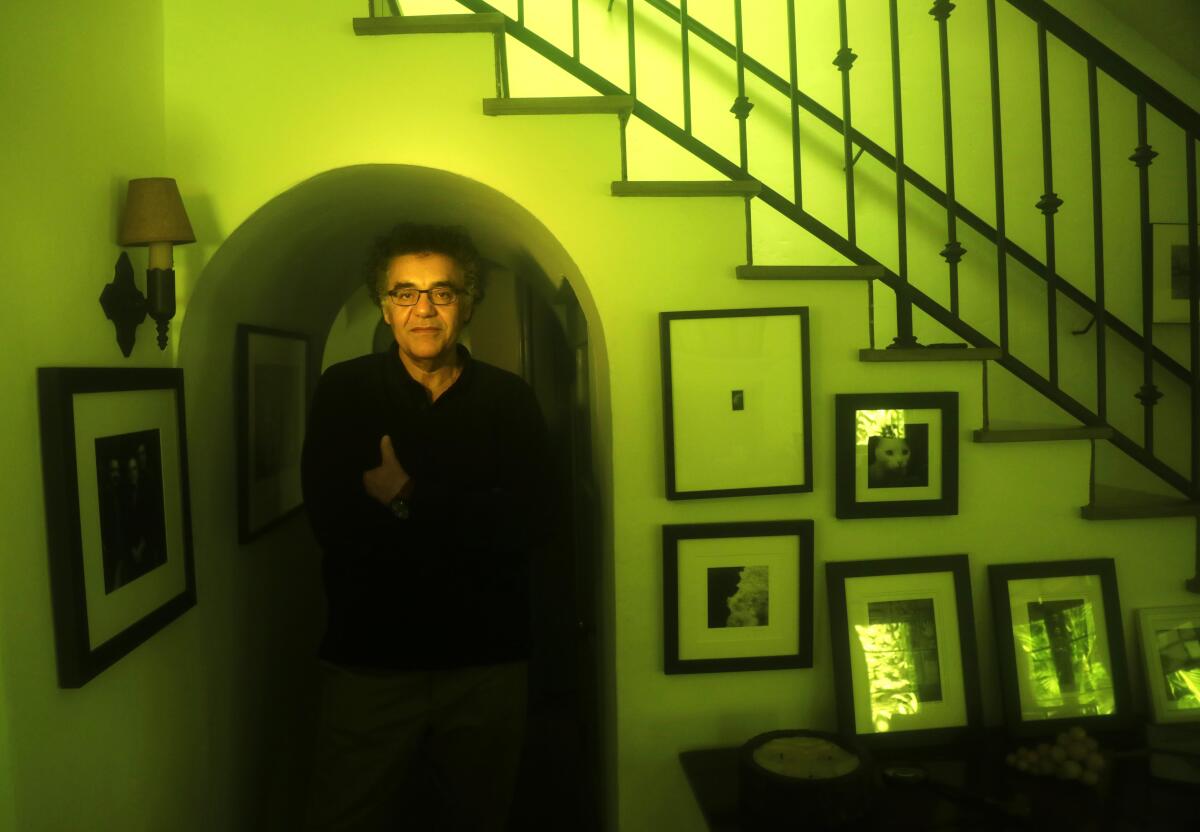
Times editor Steve Padilla will host a conversation with Garcia as part of The Times’ Book Club at the end of the month. Get all the deets here.
Essential happenings
Matt Cooper has got the 10 coolest events for the hot weekend ahead, including a work of dance theater inspired by “Hansel and Gretel” at REDCAT and a presentation of abridged versions of “Julius Caesar” and “A Midsummer Night’s Dream” at Will Geer’s Theatricum Botanicum.
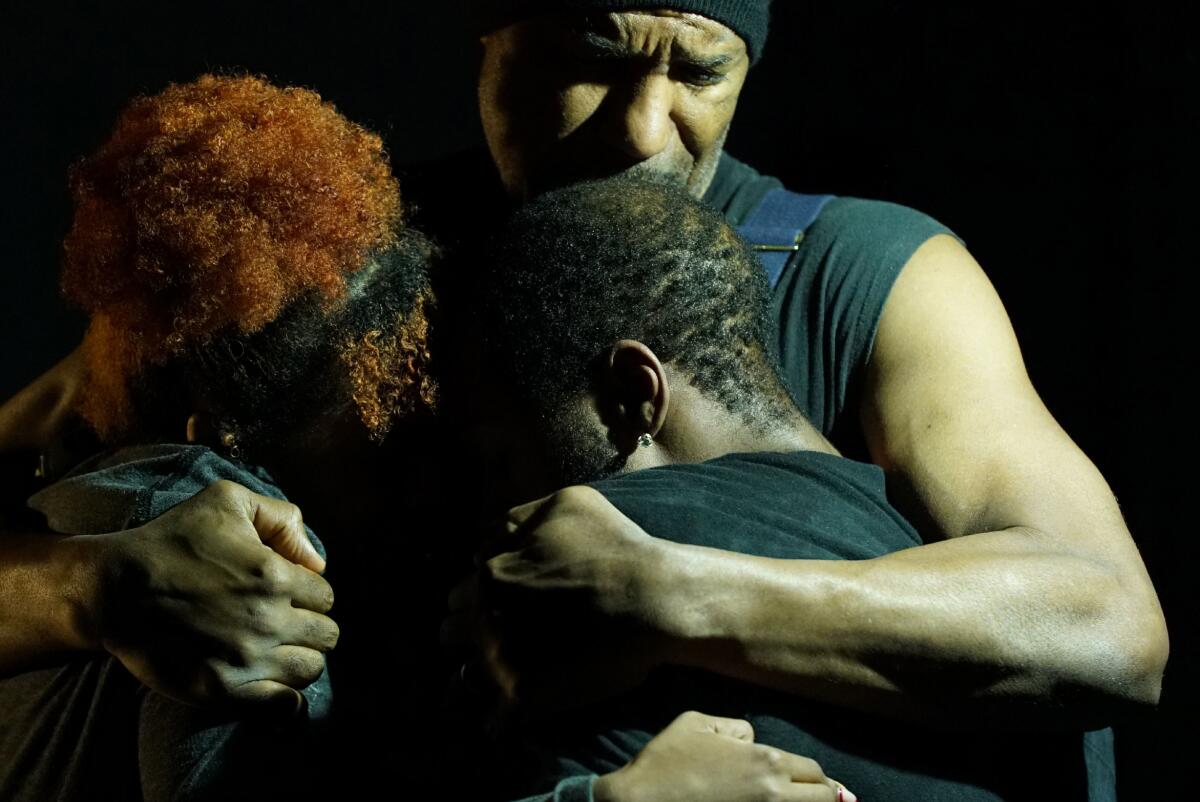
Passages
Mickey Muennig, a pioneer of California’s organic architecture movement, who designed countless buildings around Big Sur, has died at 86.
William Fagaly, a curator who helped build an important collection of African art at the New Orleans Museum of Art over five decades, is dead at 83.
As part of their “Overlooked No More” series of obituaries, the New York Times devotes a belated obit to Si-lan Chen, a mixed-race dancer of Chinese and Afro-Creole origin, who, over the course of her life, dined with Chiang Kai-shek, worked for Hollywood producer Joseph Mankiewicz, and danced on stages around the world. She died in 1996.
In other news
— A map of L.A.’s Indigenous languages.
— Art writer Jessica Lynne has an interesting piece on the role of Historically Black Colleges and Universities (HBCUs) in U.S. visual culture. “These colleges and universities,” she writes, “which have served as a critical nexus for Black cultural production for more than 150 years, should be seen as integral to any assessment of contemporary visual art tout court.”
— More than 140 Cuban cultural figures have signed a letter demanding the release of artist Hamlet Lavastida after he was detained in Havana following a residency in Berlin.
— Land artist Nancy Holt‘s archives are headed to the Smithsonian, including documentation for two projects the artist’s foundation still hopes to complete.
— Mount Rushmore is a prominent U.S. monument. Indigenous activists want to change its meaning.
— The Tree Equity Score map records the presence of shade trees in U.S. cities. Big takeaway: The poorest neighborhoods have 41% less coverage than the wealthiest ones, reports Linda Poon at CityLab. Plus, among major cities, L.A., San Diego and Houston have the highest need for trees.
— As master planning proceeds on the L.A. River, reporter Miles Griffis, of High Country News, looks at how the river has long served as a source of food to the city’s poor and unhoused.
— The American Institute of Architects Los Angeles has announced its 15 Presidential Honorees for 2021. Lorcan O’Herlihy, whom I have profiled in the past, took the Gold Medal.
— There will be a ceremonial groundbreaking on Sunday for a long in-the-works Armenian American Museum in downtown Glendale, designed by Alajajian Marcoosi Architects. The museum will be part of the city’s revamped Central Park (a design studded with palm trees — sigh).
And last but not least ...
This weekend, I’ll be pouring one out for Italian chanteuse and icon Raffaella Carrà, who died Monday. Pay your respects with some repeat viewings of the video for her sexual liberation anthem “A far l’amore comincia tu” (“Do It, Do It Again”). RIP to a performer who knew how to rock a spangled pantsuit.
P.S. I’m takin’ off for a coupla weeks to find myself, along with some dastardly things to eat. My multitalented colleague Charles McNulty will be picking up the reins next week. See you on the other side!
The biggest entertainment stories
Get our big stories about Hollywood, film, television, music, arts, culture and more right in your inbox as soon as they publish.
You may occasionally receive promotional content from the Los Angeles Times.




